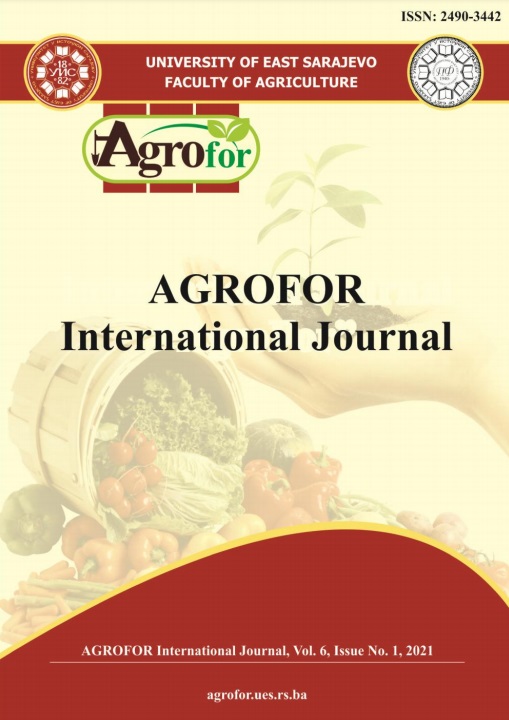IMPLEMENTING THE HIERARCHY-ANALYTIC PROCESS WITHIN FOREST FRUITS FROM MUREȘ COUNTY, ROMANIA
DOI:
https://doi.org/10.7251/AGRENG2101108TAbstract
Romanian forest ecosystems prove their true value through the complex diversity
they offer. Varied relief forms, site conditions, temperate climate and the stand
composition and structure elements sustain the apparition of vegetation layers and
their population with diverse forest species that accentuate biodiversity. The
economy from Romania’s forest area is improved by the increased potential of
harvesting a limited number of wood or non-wood products in order to ensure the
population’s needs and wellbeing. The activity of trading forest goods is
encouraged by the maintenance of a good collaboration with international
companies. The purpose of the present research is to analyse the most appreciated
forest fruits from Mureș County, România. A total number of eight forest fruits
were selected from the non-wood products category and were distributed in the
following classes: achene (acorn, hazelnut), false fruits (rosehip), pluri-drupes
(raspberry, wild strawberry), pseudo-beny (pulp cones from Juniperus L Genus.),
drupes (Prunus Genus) and benyform drupes (black elder). The analytic hierarchy
process was used in the evaluation of the qualitative and quantitative criteria.
Based on it, eight alternatives were attributed to each analysed fruit using 19
evaluation criteria. The Expert Choice Desktop software was used in order to
emphasize the performance efficiency. As such, the most valuable forest fruits
from this area proved to be Rosa canina, Rubus idaeus and Fragaria vesca. In
regard for the harvesting of non-wood products, managers from the forest sector
must take into account analyses that can evaluate the offered economic potential,
especially in particular cases.

